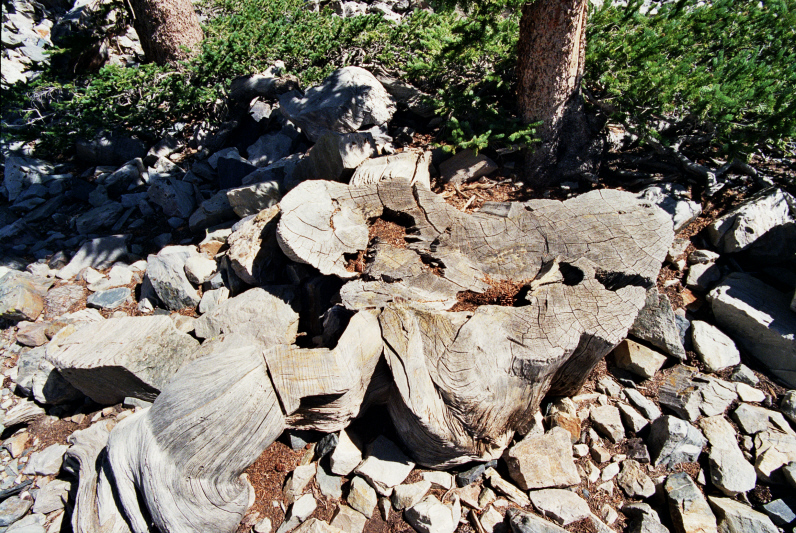
P!
Soon to be cut down by some Islamic ...

They need to chop it down and count the rings just to make sure.
It won’t be if any Muslims are allowed near it.
Very true, and there are trees near my home, Bristlecone Pines, which are nearly 5,000 years old and still living.
Yeah, but will it survive “The Invasion of the Bodhi Snatchers.”
“Nautiyal and colleagues examined the tree after removing the cement slabs around its base...”
There is no such thing as a cement slab. Cement is a powder. If it’s hard, it’s concrete.

Cut stump of the tree under discussion.
In the 1950s dendrochronologists were making active efforts at finding the oldest living tree species, in order to use the analysis of the rings for various research purposes, such as the evaluation of former climates, the dating of archaeological ruins, and addressing the basic scientific question of maximum potential lifespan. Bristlecone pines in the White Mountains of California and elsewhere were discovered by Edward Schulman to be older than any species yet discovered. This spurred interest in finding very old bristlecones, possibly older than the Methuselah tree, aged by Schulman in 1957 at over 4700 years.
Donald R. Currey was a graduate student at the University of North Carolina at Chapel Hill studying the climate dynamics of the Little Ice Age using dendrochronology techniques. In 1963 he became aware of the bristlecone populations in the Snake Range in general, and on Wheeler Peak in particular. Based on the size, growth rate and growth forms of some of the trees he became convinced that some very old specimens existed on the mountain, cored some of them, and found trees exceeding 3,000 years old. However, Currey was not able to obtain a continuous series of overlapping cores from WPN-114. Here, stories diverge. It is not clear whether Currey requested, or Forest Service personnel suggested, that he cut down and section the tree in lieu of being able to core it. There is also some uncertainty as to why a core sample could not be obtained. One version has it that he broke or lodged his only long increment borer and could not obtain another before the end of the field season, another claims he broke two of them, while another implies that a core sample was too difficult to obtain and also would not provide as much definitive information as a full cross section of the tree would.
In addition, there are conflicting views over Prometheus being unique in the Wheeler Peak grove. It is reported that Currey and/or the Forest Service personnel who authorized the cutting believed the tree was just one of many large, very old trees in the grove. Others, at least one of whom was involved in the decision-making and tree cutting, believe that the tree was clearly unique — obviously older than other trees in the area. At least one person involved says that Currey knew this to be true at the time, although there is no known admission from Currey himself that he knew this, and others have disputed that the tree, based on observation alone, was obviously much older than the others.
Another uncertainty is that it is not clear why the felling of such an old tree was necessary given the topic Currey was studying. Since the Little Ice Age started no more than 600 years ago, many trees could presumably have provided the information he was seeking for that time period. However, in Currey's original report in the journal Ecology (Currey, 1965) he refers to the Little Ice Age as encompassing the period from 2000 BC to the present, thus defining the Age over a much longer time period than is currently accepted. Whether this was the common sentiment at the time is not known. In the article, Currey indicates that he sectioned the tree as much from the question of whether the oldest bristlecones were necessarily confined to California's White Mountains (as some dendrochronologists had been claiming) as from its usefulness in regard to studies of the Little Ice Age.
Whatever the rationale, the tree was cut down and sectioned in August 1964, and several pieces of the sections hauled out to be processed and analyzed, first by Currey, then by others in later years. Sections, or pieces of sections have ended up in various places, some of which are publicly accessible, including the Great Basin National Park visitor center (Baker, Nevada), the Ely Convention Center (Ely, Nevada), the University of Arizona Laboratory of Tree-Ring Research (Tucson, Arizona), and the US Forest Service's Institute of Forest Genetics (Placerville, California).
Good thing George Washington wasn’t born there!